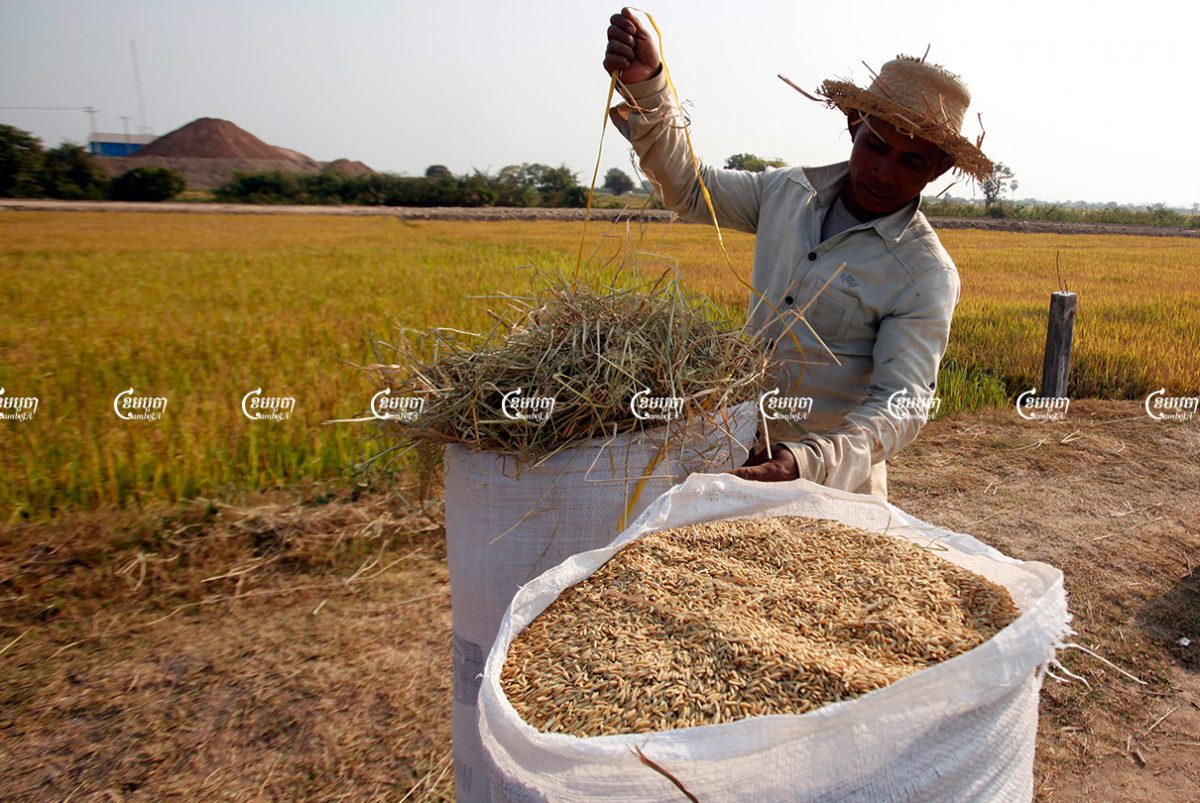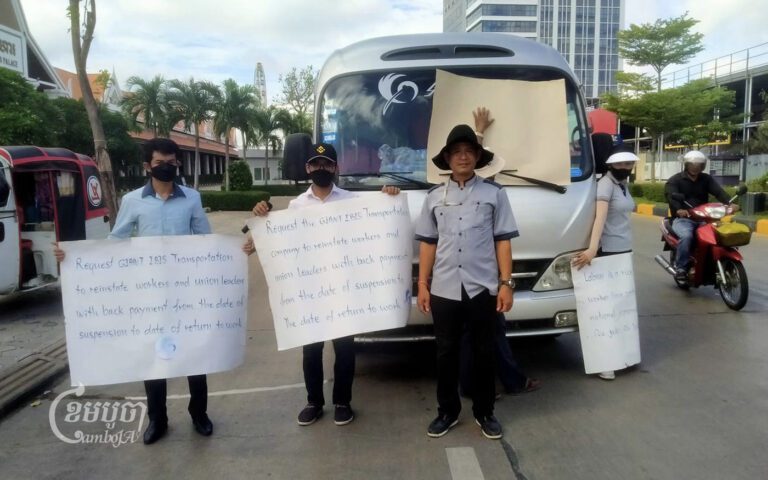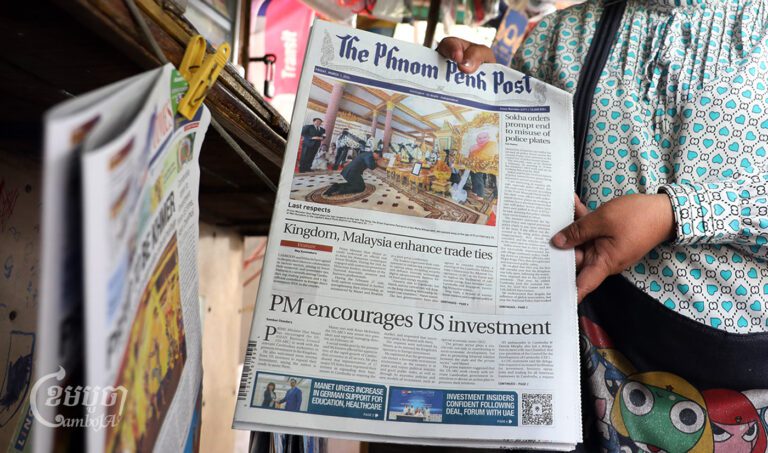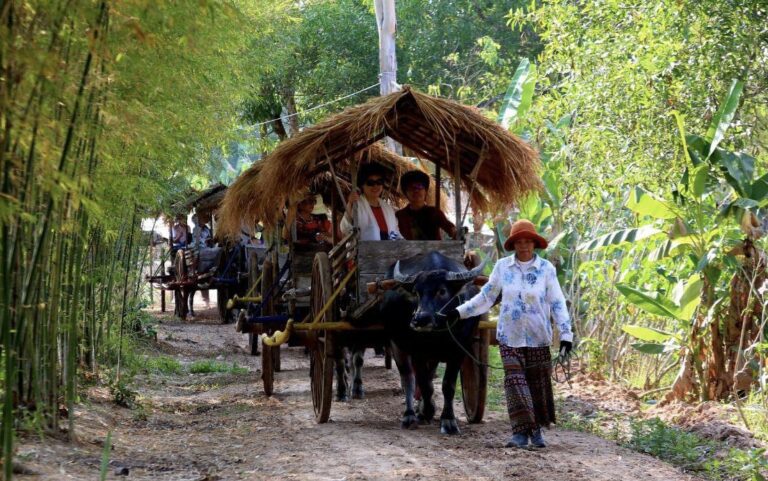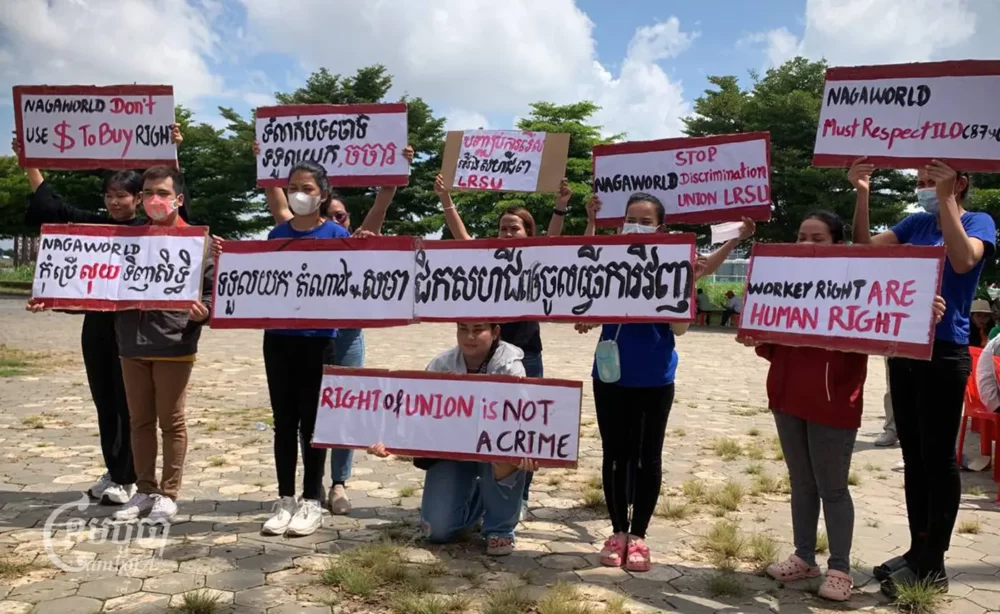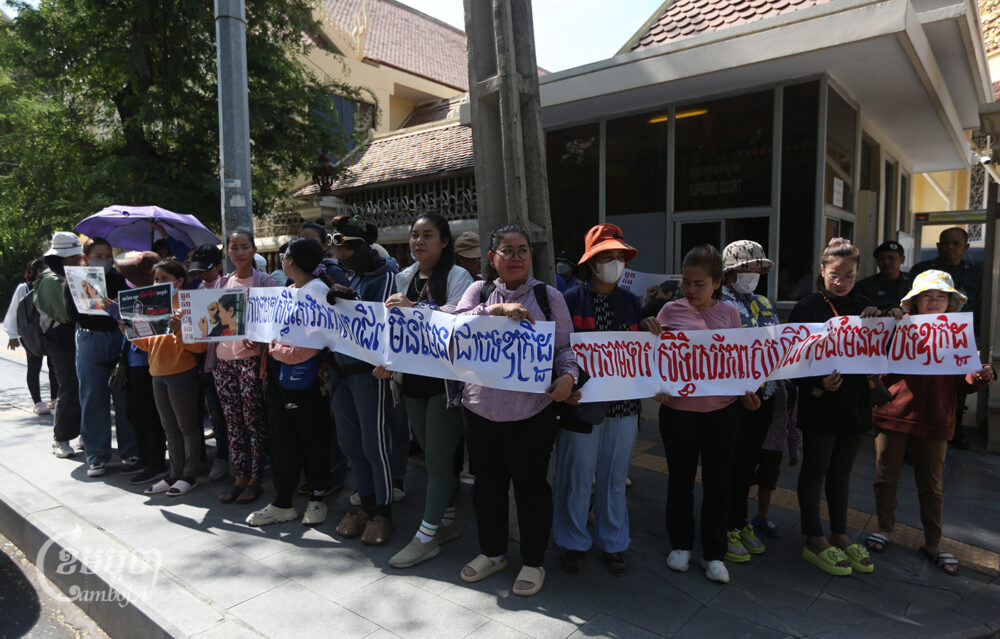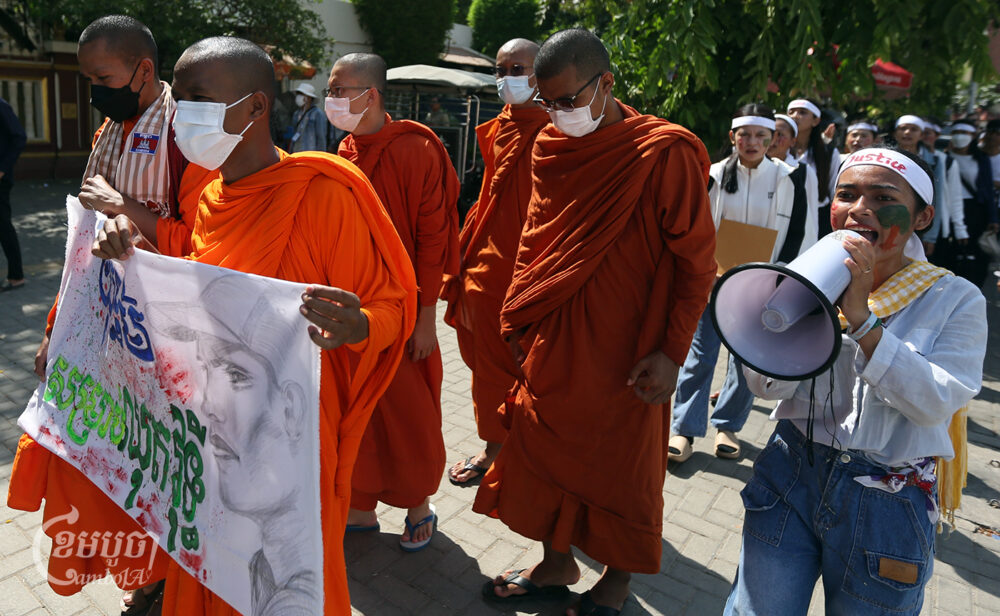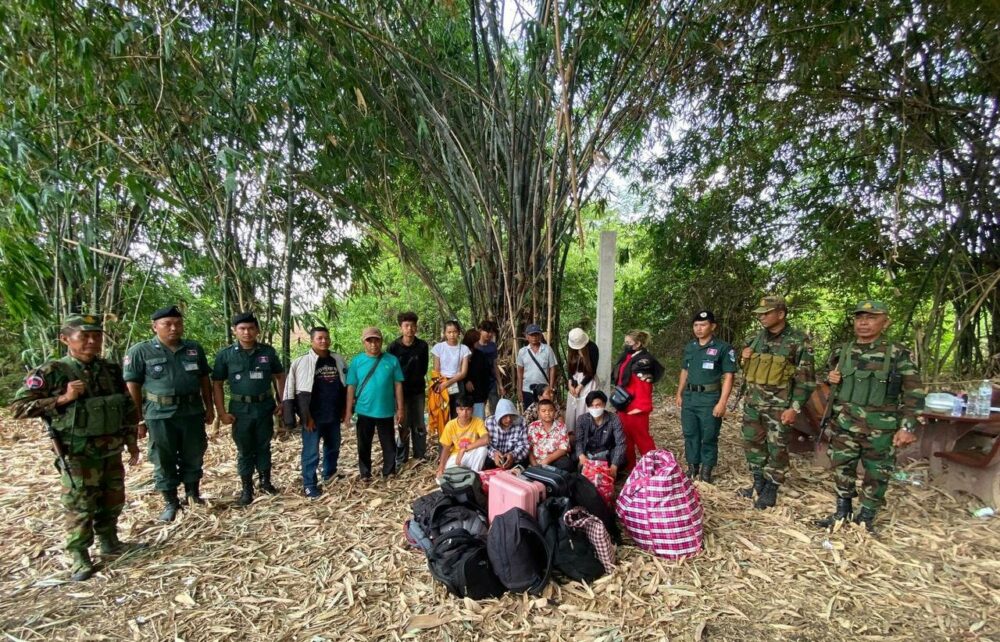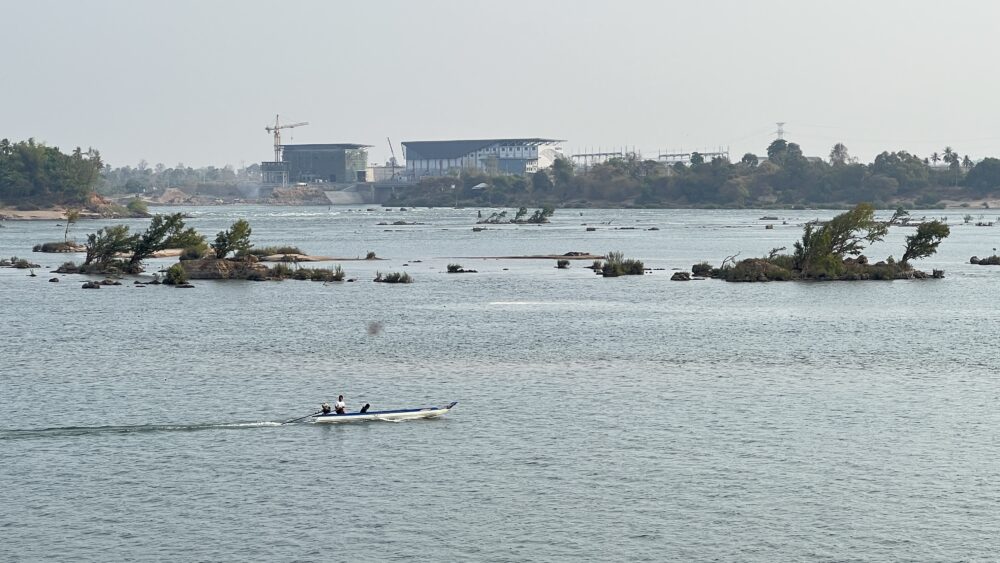For Cambodian farming families like that of Soeung San, the pandemic era has ushered in a bleak financial harvest.
A farmer from Takeo province’s Tram Kok district with a family of seven, San told CamboJA that local fields have withered under a lack of rain at a time when COVID-19 restrictions have limited the traditional flow of rural labor to find work paid in cash. Though farmers have long had to be resilient in the face of natural challenges, San said this year’s stunted options have made it especially difficult to find enough money to support the family and service its debts.
“I rely mostly on my wife who works in a factory to pay off bank debts. My wife’s salary is only enough to repay the loan,” San said. “I have not asked the bank for a delay because I am afraid the bank will not lend to me someday later when I need a new loan.”
Farmers from different provinces interviewed by CamboJA told similar stories, pointing mostly to weak commodity prices leading to revenue loss and hardship during the pandemic. Weak prices for agricultural goods throughout this year have even left some growers to abandon mangoes and other crops to rot in the fields rather than spend money to ship fruits that yield no financial return.
The plight of rural people during COVID-19 has pushed 87 civil society organizations and farming communities to send an open letter this week to the Cambodia representative of the UN’s Food and Agriculture Organization (FAO) to address the concerns faced by farmers and informal workers.
Though it didn’t cite a source, the collective wrote in the letter that the number of people experiencing severe hunger in Cambodia had doubled by 2020 as approximately 79 percent of the rural population rely on agriculture, fishery, and forest for their livelihoods.
The group also estimated that roughly 1.6 million rural farming households have experienced seasonal rice shortages in an unspecified time period, stating that approximately 30 percent of these households’ spending comes from rice sales.
The organizations also wrote they had conducted a study that found that about 40 percent of smallholder farmers are indebted to banks and microfinance institutions for the sake of agricultural production. The research was based on interviews with 98 smallholders in seven provinces, including Kampong Chhnang, Kampong Speu, Sihanoukville, Tbong Khmum Kratie and Preah Vihear.
Farmers reached by CamboJA spoke of low prices for their goods and, for those on the borders, increased cost and difficulty in transportation.
Chak Thoeun mainly raises fish and chicken in the Boeng Leach Sambo Phal community in Kampong Chhnang province. He said brokers have offered lower prices for produce on the back-end even as market prices have often increased.
“Before COVID-19, we could sell a kilogram of cabbage for 4,000 riel, or $1,” he said. “But now they offer us just over 2,000 riel while the price in the market has risen to 7,000 riel. This is a problem for farmers.”
Those farmers who rely on markets further afield may struggle even more. Cambodia relies heavily on the export of raw material of agricultural products to neighboring Thailand and Vietnam, but this outward flow of goods has been stifling under pandemic-related border restrictions.
Ren Vibol, a farmer in Takeo province’s Kiri Vong district on the border with Vietnam, told CamboJA he’s seen prices for his paddy rice fall by about a third as exports to Vietnam have been restricted.
“The price depends on the traders and has dropped so much,” he said. “We cannot make profit from the sale of paddy rice, we cannot offset the production cost.”
Vibol said before the border closed, farmers could sell paddy rice for 900-1,000 riel per kilogram. Now, the price is roughly 650 riel.

Similar problems abound on Cambodia’s western border with Thailand. Srun Phearum, a farmer from Battambang province, has 3,000 mango trees on more than 10 hectares of land. Over the past two years, he says the price for his mangoes has fallen while he has to pay a new, unofficial fee to police at the border to transport his goods. Squeezed on both ends, he says it’s been very difficult to make a profit.
Theng Savoeun, president of the Coalition of Cambodian Farmer Community, one of the 87 civil society organizations that submitted the petition to the FAO, said the COVID-19 situation puts agricultural livelihoods at risk at a time when people are struggling to pay back loans.
“The government needs to further improve the market system through trade mechanisms with other countries to export agricultural products,” he said, calling on the government to also increase the national budget for agricultural investment. “We want the government to provide loans to farmers with low interest rates through the state-owned Agricultural Rural Development Bank.”
Minister of Agriculture Veng Sakhon and his spokesman Srey Vuthy could not be reached for comment, though Vuthy told CamboJA last week that the ministry is supporting farmers with technical assistance to improve their livelihoods during the pandemic.
Chhim Vachira is the director of the Department of Agriculture for Battambang province, which produces the most rice in the country. Vachira said the price of paddy rice in the province has fallen somewhat but has not seen a huge impact.
“For now, there are no major agricultural crops exported to Thailand as farmers have already sent since before the large-scale COVID-19 outbreak,” he said. “Now small-scale rice paddy sales are being collected by local traders and prices have fallen slightly.”
In 2020, Cambodia exported more than $4 billion in agricultural products, according to data from the Minister of Agriculture, Forestry and Fisheries.
However, while larger operators may be able to maintain stability on volume, those smaller growers still say they’re struggling to make ends meet.
Kim Leang, a 73-year-old farmer in Battambang province, had previously borrowed $1,000 from a private lender to fund vegetable production. She told CamboJA she hasn’t been able to make a profit since the February 20 outbreak of COVID-19 in Cambodia yet still needs to pay her monthly interest rate.
“COVID-19 made me lose revenue, make no profits and owe more money to the lenders,” she said.


